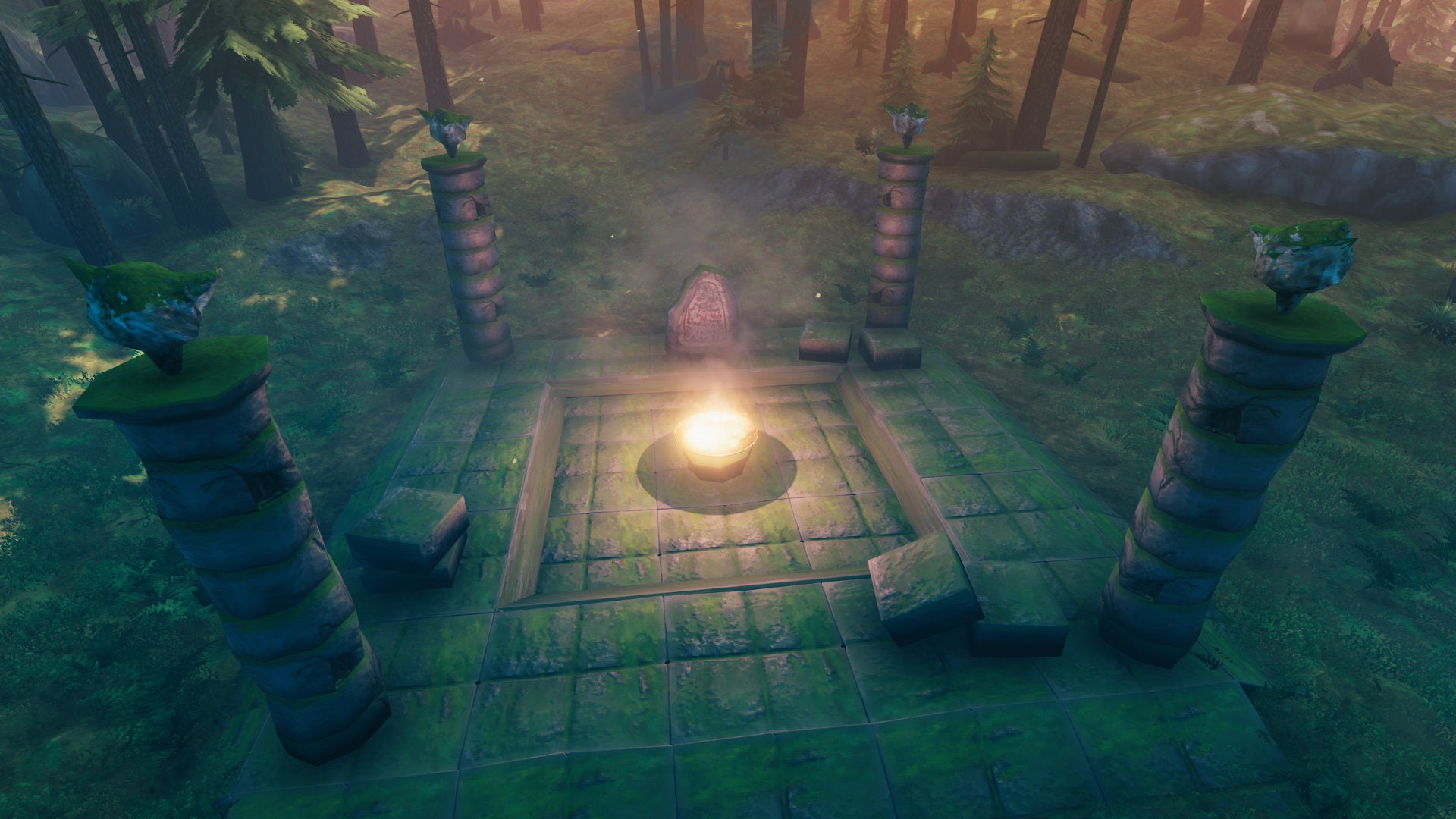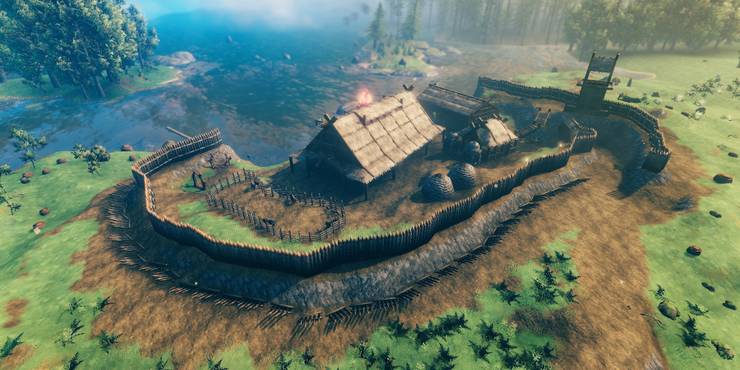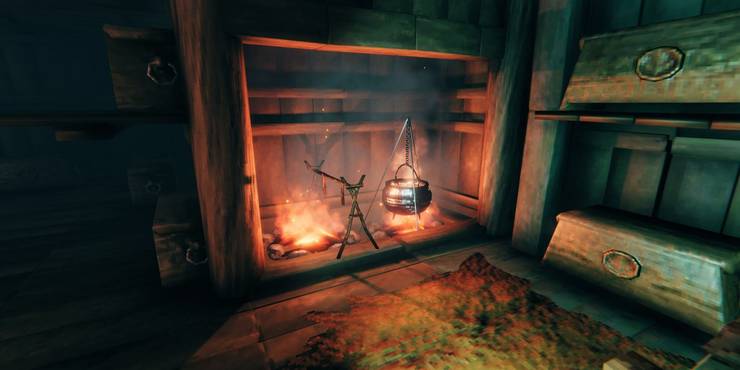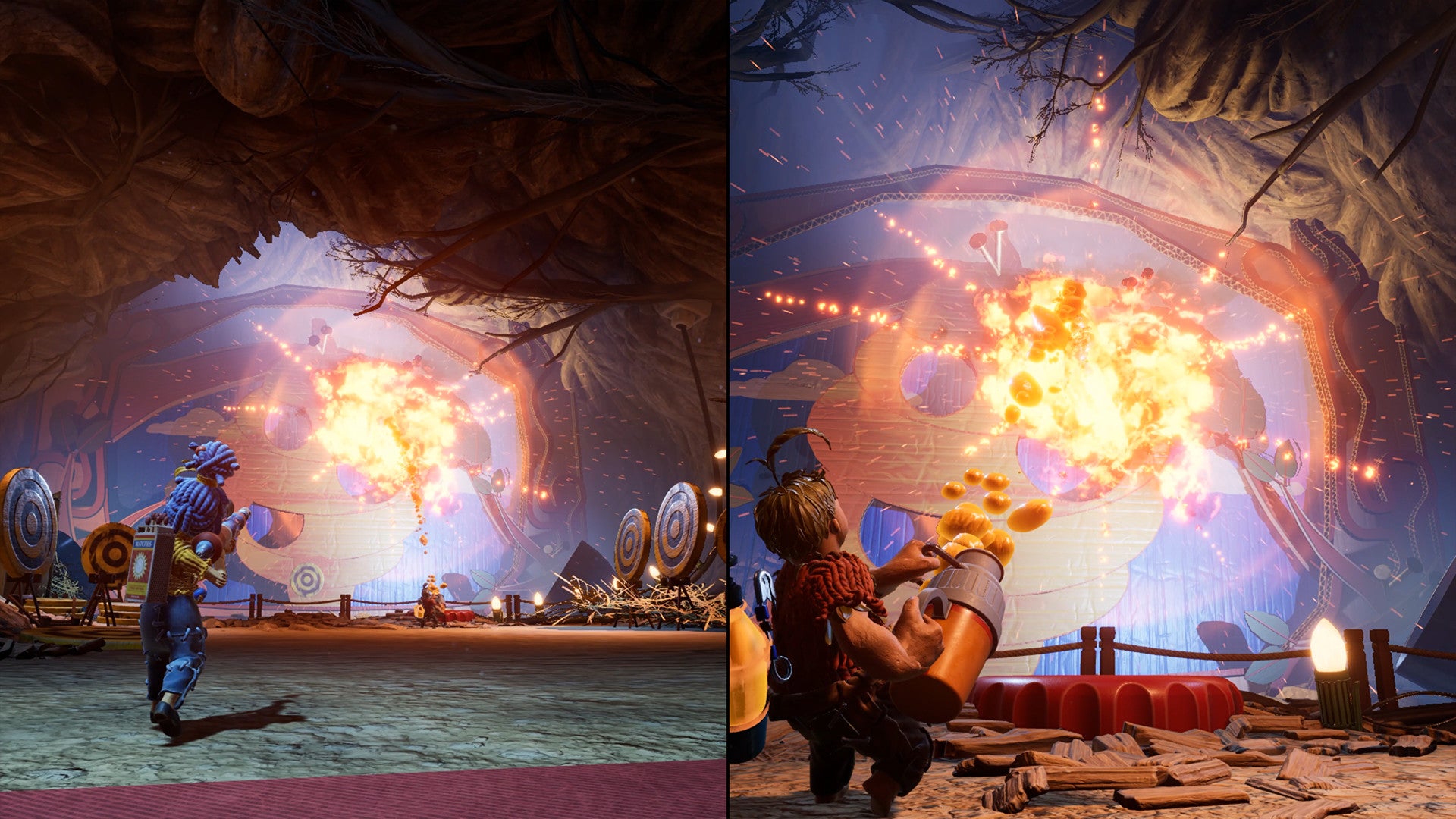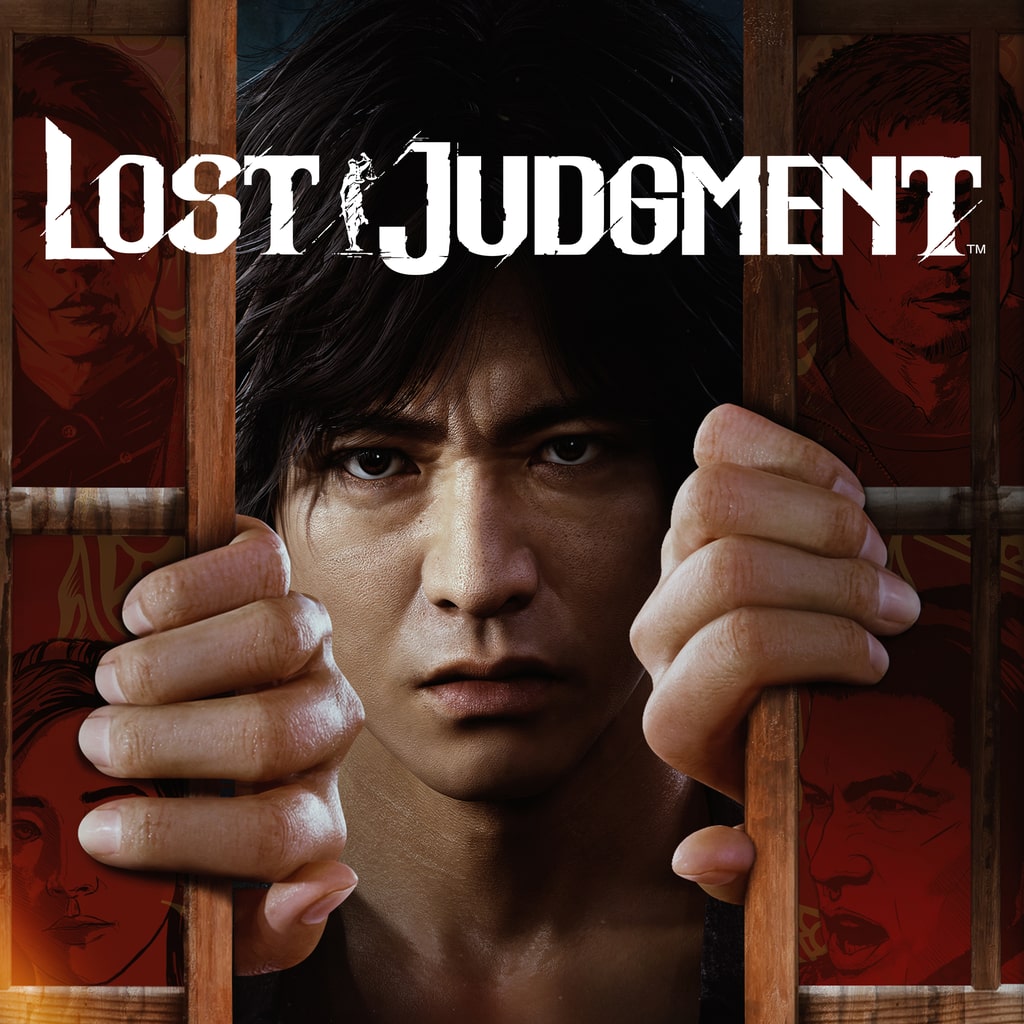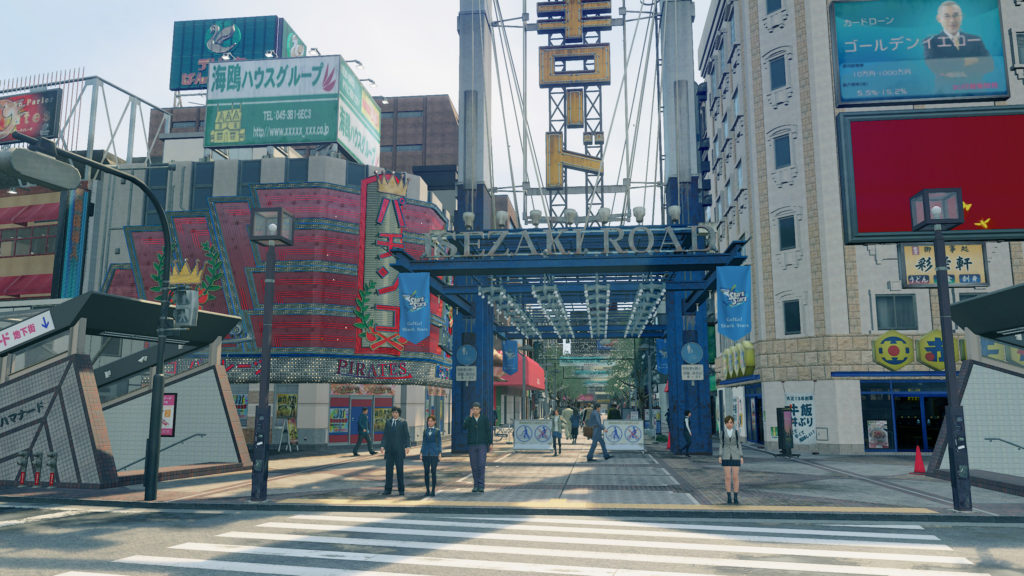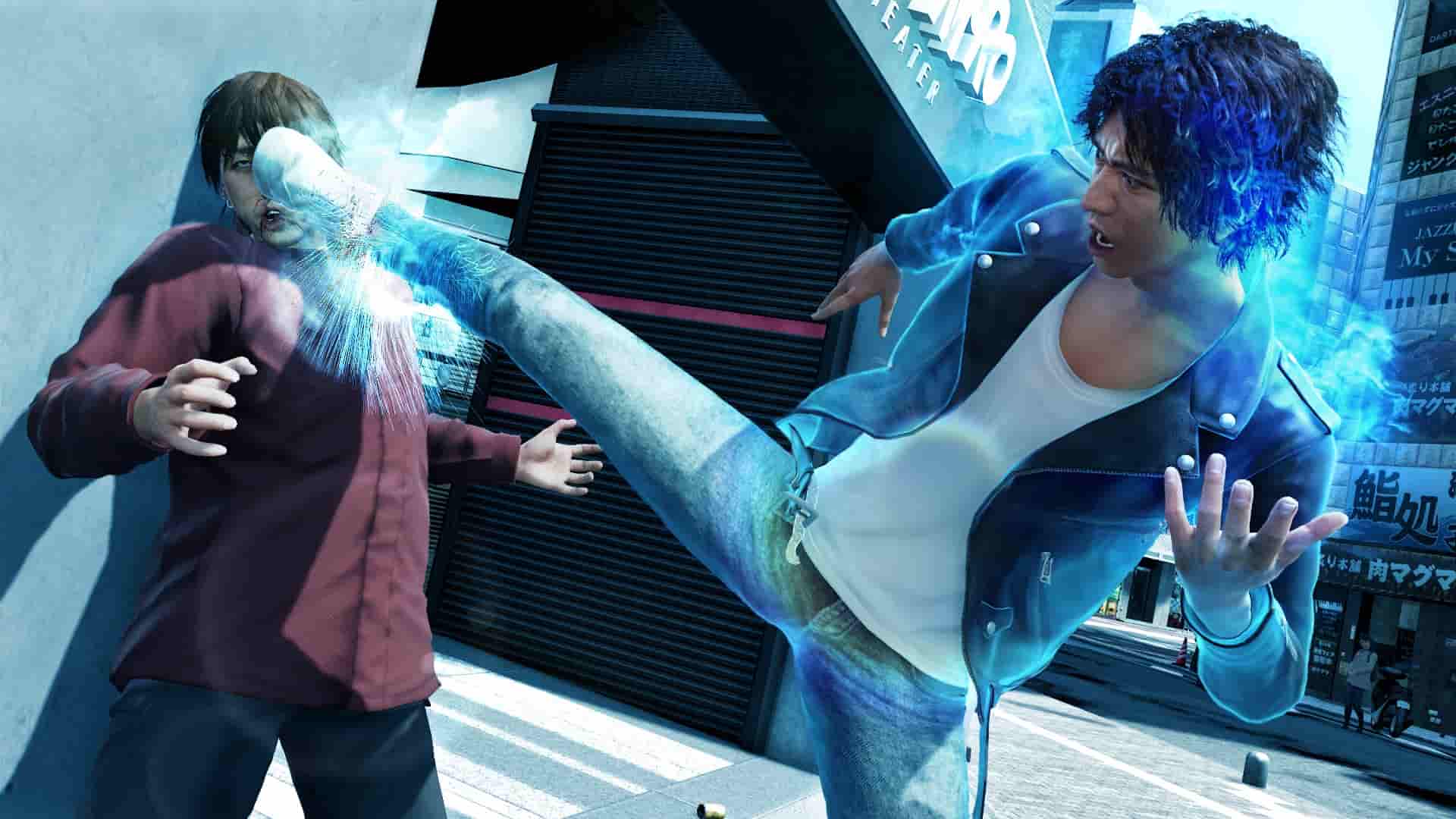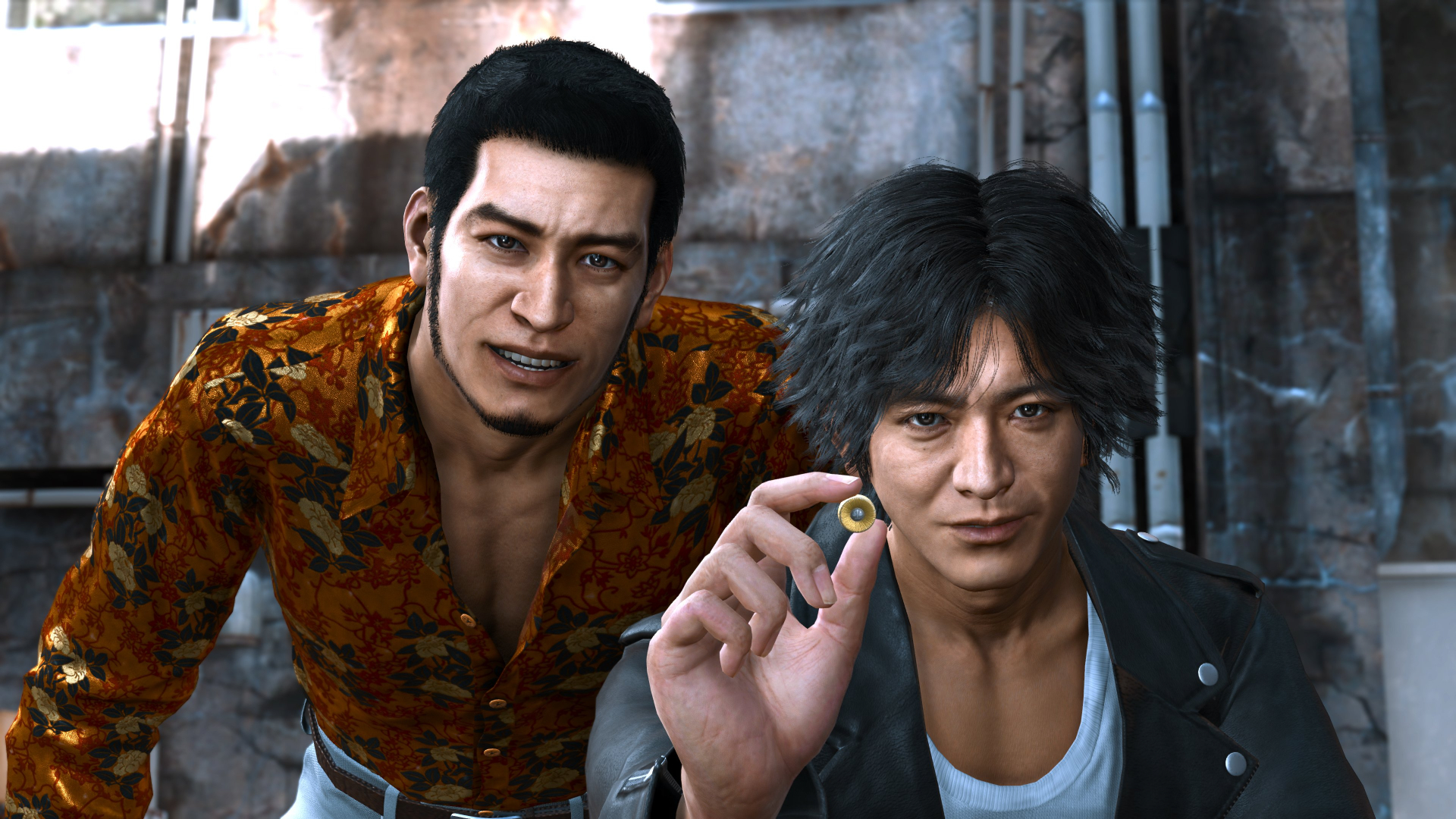“grimly enchanting” – PC Gamer
IGF (Seumas McNally Grand Prize Finalist): https://igf.com/loop-hero
Website demo: https://loophero.com/
Gameplay video: https://www.youtube.com/watch?v=P9xl0K08UwE
Introduction
Loop Hero centers around a brave hero embarking on a journey to rebuild his collapsed world. Stuck in a timeless loop, the hero regains silvers of his memory and advances on a harsh path to defeat the Lich that destroyed his world. This is a story of one’s solitary perseverance in a desolate world. Driven by a unique set of game mechanics revolving around mystical cards, Loop Hero enchants players in an endless RPG, push-your-luck rogue-like game.
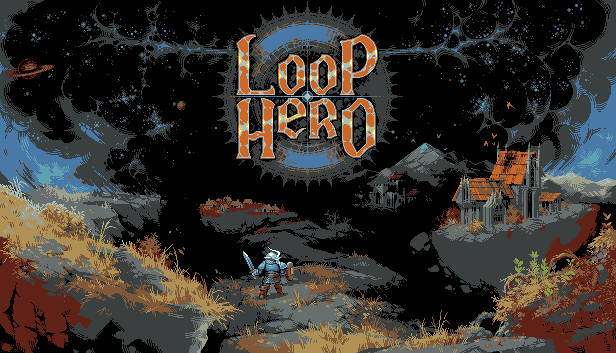
The Elemental Tetrad
STORY
The game begins after the world’s demise, with a dialogue introduction that tells a tale of an evil lich obliterating reality and everything in it. The hero wakes up in a small campsite along a path and tries to restore the world. En voyage, he meets other survivors that assists him in restoring the world or desperate ones that attack him in despair.
MECHANICS
Loop Hero is made of a beautifully intersecting set of game mechanics, of which includes:
Infinite Adventure: Select from unlockable character classes and deck cards before setting out on each expedition along a randomly generated loop path. No expedition is ever the same as the ones before it.
Strategics: Wield cards to place enemies, buildings, and terrain along each unique loop. Finding balance between the cards to increase the chances of survival is tricky and thrilling.
Looting: Strike down creatures, recover stronger loot to equip on the fly and unlock new perks along the way. Gain resources for the camp.
Expanding Camp: Turn resources into campsite upgrades and to reinforce the hero for the next loop.
Boss Fights: Overcome a series of unholy guardians over a grand saga to save the world and break the time loop of the Lich.
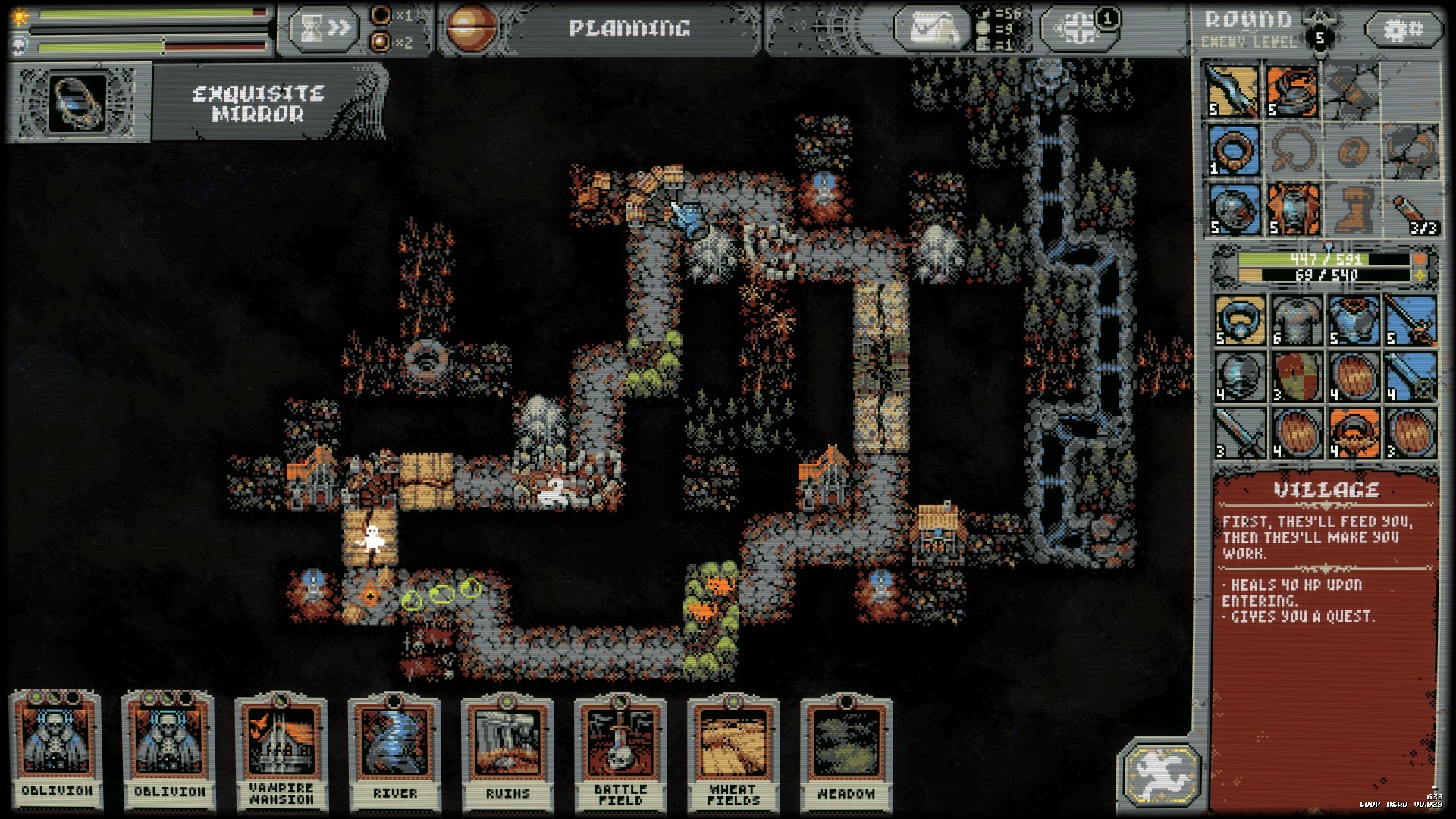

AESTHETICS
In terms of graphics, Loop Hero may not be as visually appealing as anime-style games like Genshin Impact or adventure games like Red Dead Redemption 2. However, it has beautiful pixel art designs, crafted with very minute details that appeals to players that love rogue-like games. Additionally, it boasts an alluring playlist of OSTs, which corresponds to the different levels and sections of the gameplay. An example that immerses players in the gameplay is the menacing music played on encounter with boss monsters.
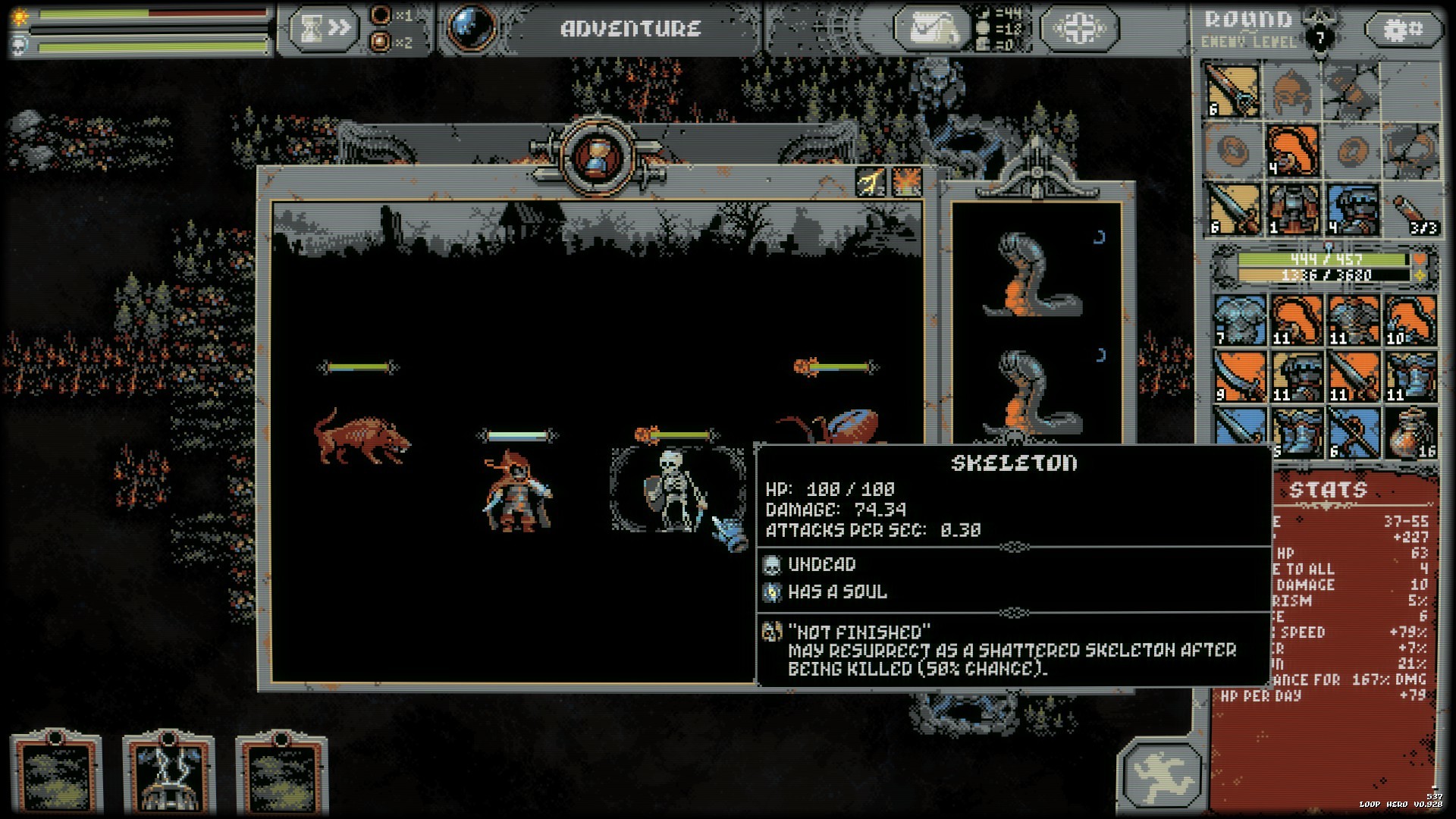
TECHNOLOGY
Loop Hero is a 2D game that doesn’t need to implement the complex graphics and rendering in 3D games. It also doesn’t employ a lot of physics like in some 2D games such as Angry Birds. As a single player game, it also doesn’t integrate multiplayer aspects or enable cooperation between players. However, the low memory, graphics and storage requirements allow it to be playable on most devices and reach out to a greater pool of players. The game is available on Windows, MacOS, Linux as well as Nintendo Switch.
Lenses
THE LENS OF FLOW
The game has a clear goal – to defeat the Lich. The different aspects of the game builds towards this ultimate goal to defeat an overpowering adversary. The endless loop and camp expansion mechanics of the game reinforces each other (the loot gained from adventure upgrades camp while camp improvements help the character to survive longer in the adventure). As the adventurer gets stronger and stronger, the challenges posed by the monsters increases until the emergence of the final boss.
THE LENS OF CHANCE
The looting aspect in the adventure creates a sense of excitement within the player, as the player has a good chance of obtaining extremely strong equipment from monster drops. The game is designed in a way such that if the player takes greater risks (by placing cards in a certain fashion to increase difficulty of monsters that appear), the player has a better chance of obtaining higher tier drops. Additionally, the randomness of cards received creates a thrill by making players adapt to the situation.
THE LENS OF ATMOSPHERE
The game is designed from an apocalyptic point-of-view. The background is gloomy and the colour scheme is dull which creates a sense of foreboding. The art style fits that of a rogue-like game and effort is put in to make the interface look ancient. The mouse cursor is also changed to that of an iron gauntlet which helps to craft an immersive experience for the player. The atmosphere is reinforced with stimulating music and sound effects that give off a feeling of battle.
THE LENS OF ACTION
Action-wise, Loop Hero does an excellent job of enticing players to learn the game mechanics and strategies to defeat monsters in the game. The intuitive interface allows users to dive right into the game with little tutorial while encouraging players to experiment and try out different strategies. However as the game reaches the end stages, players have given reviews that it gets more and more difficult to overcome bosses, forcing players to end up relying on a fixed set of strategies of cards to defeat levels. This limits players’ range of actions to take, which could lead to players losing interest due to lack of creative stimulus.
THE LENS OF TIME
Loop Hero balances the grind of the game even as an endless RPG genre of game. This makes it different from auto-RPG mobile games which are designed to be so tediously grindy that even when the combat is automated, the game is still a chore. The clever twist of map/card building mechanics and a fun settlement-building portion allowed me to spend an enjoyable time playing the game, rather than just grinding to progress. However, the game does get grindy towards the later parts which may frustrate players.
Conclusion
Overall a well-designed game with a unique take on the usual dungeon-crawler games. Highly recommended to try.








